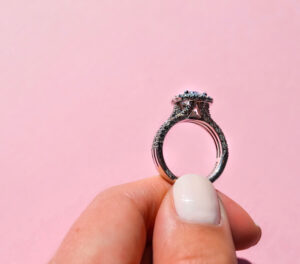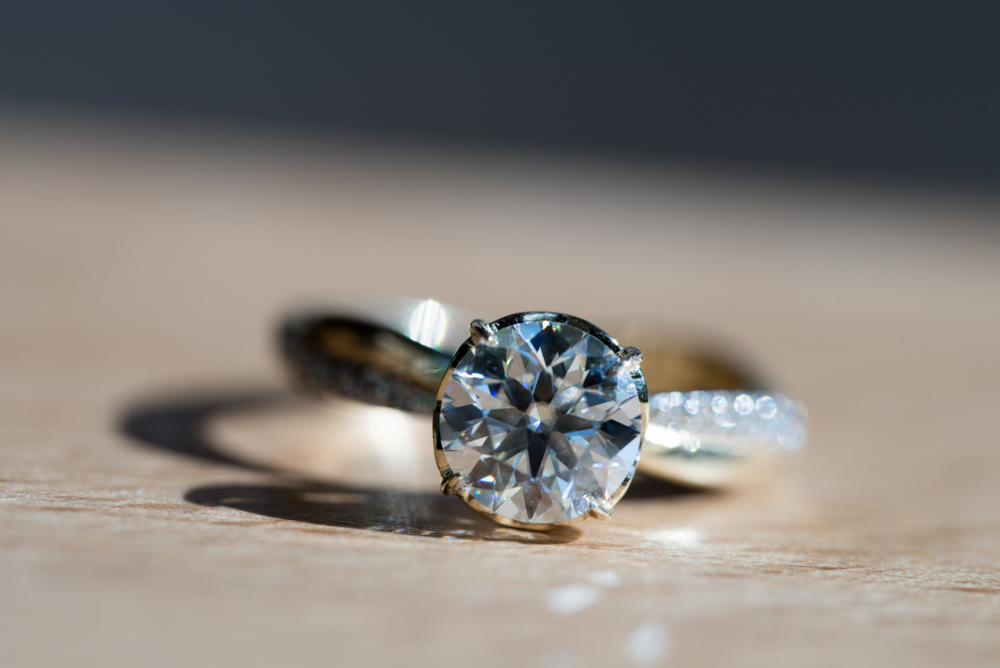
The prong setting is the most commonly used setting in diamond rings. It uses small prongs, which are claw-like structures, to secure the gemstones to the band. The prong setting is perfect for showing off your expensive gemstones to the world, as this setting offers better visibility for your stone. Additionally, the prong setting can enhance the brilliance and shine of your diamonds by allowing the proper entry of light.
In a prong-set ring, the diamond will not be covered by the metal like in a bezel setting. Instead, small claws will be used to hold the stone securely to the band. Hence, the entry of light into the stone will not be hindered by this particular setting. Additionally, the stone can reflect and refract light efficiently because of the low levels of metal covering it.
The prong setting can be a better option for you if you want to create the illusion of size for your diamond, as the stunning brilliance associated with this stone can enhance the appeal of your stone. Whether your ring has natural or lab grown diamonds, the prong setting can be a wonderful choice to accentuate their appeal.
Types Of Prong Setting
There are different types of prong settings used in diamond rings. The type of prong setting can vary based on the number and shape of prongs.
The following are some of the commonly used prong settings in engagement rings:
Four-Prong Setting
This setting uses four prongs to hold the diamond. It offers great brilliance, as the visibility of the stone will be high. But the security offered by this setting will be low in comparison with other settings, as there are only four claws to secure the stones.
Six-Prong Setting
Here, the stone will be set using six prongs. So it can enhance the security of the stone but reduce its visibility. Therefore, you will have to compromise the visibility and brilliance of your stone for its security.
Rounded Prongs
The prongs in this type of setting will have a rounded head. Here, the prongs are extended just above the diamond’s girdle.
Pointed Claw Ring

In this setting, the prongs will have pointed edges that extend longer than the rounded prongs but cover less surface of the stone. Hence, this setting can enhance the protection while accentuating the beauty of the stone.
V-Prong Setting
This particular setting is designed to protect the pointed edges of some particular diamond shapes including princess, pear, and marquise. This setting protects the vulnerable points of diamonds from chipping.
So when choosing a prong setting for your ring, consider the protection and visibility you want for your center stone.
